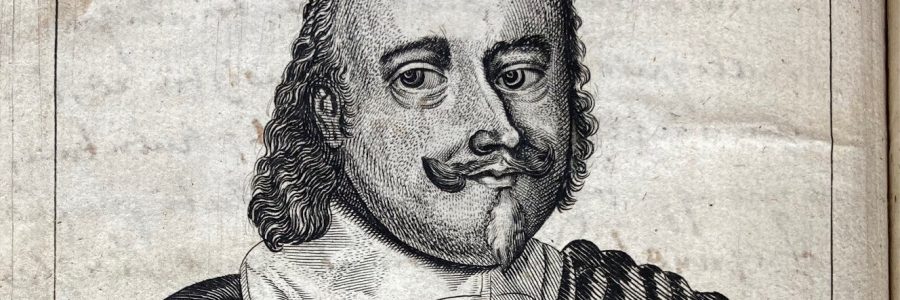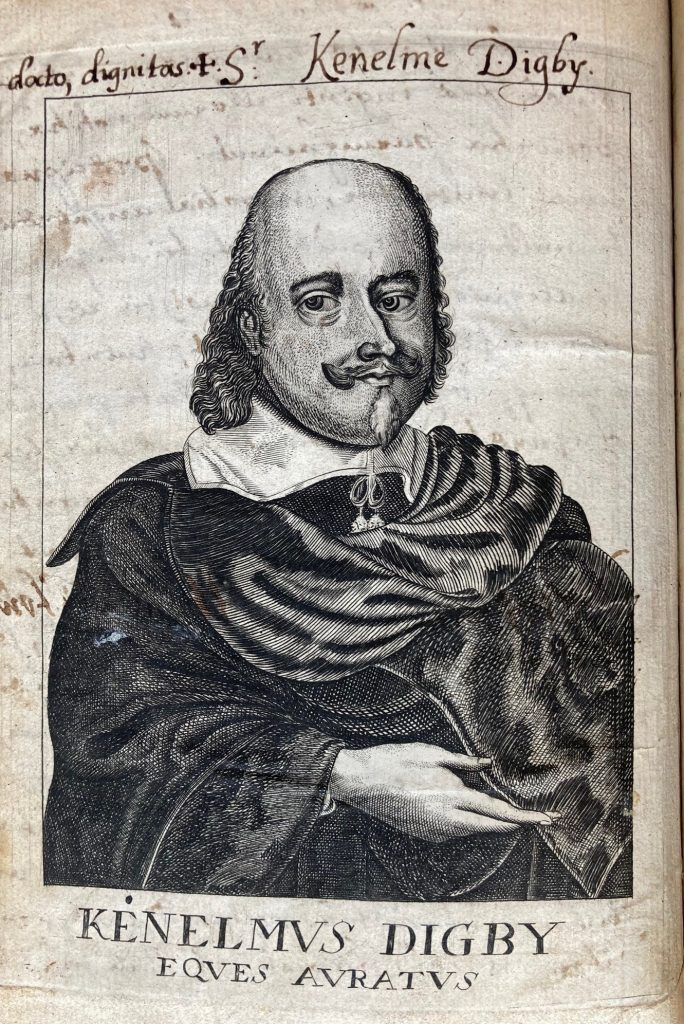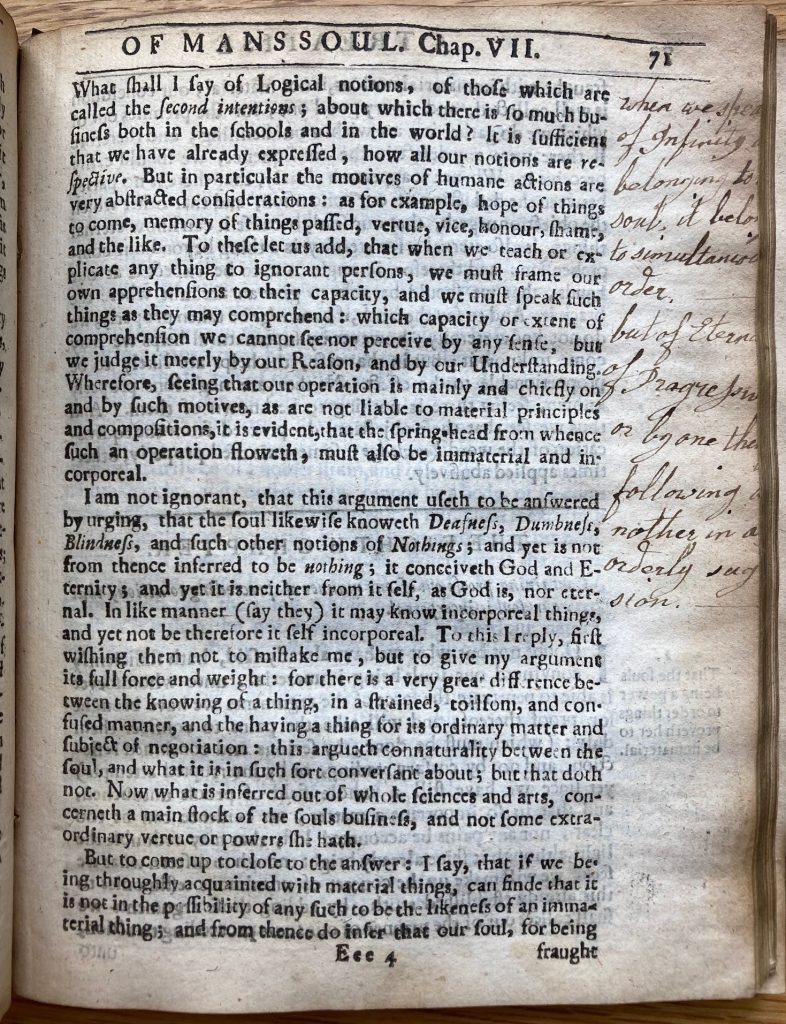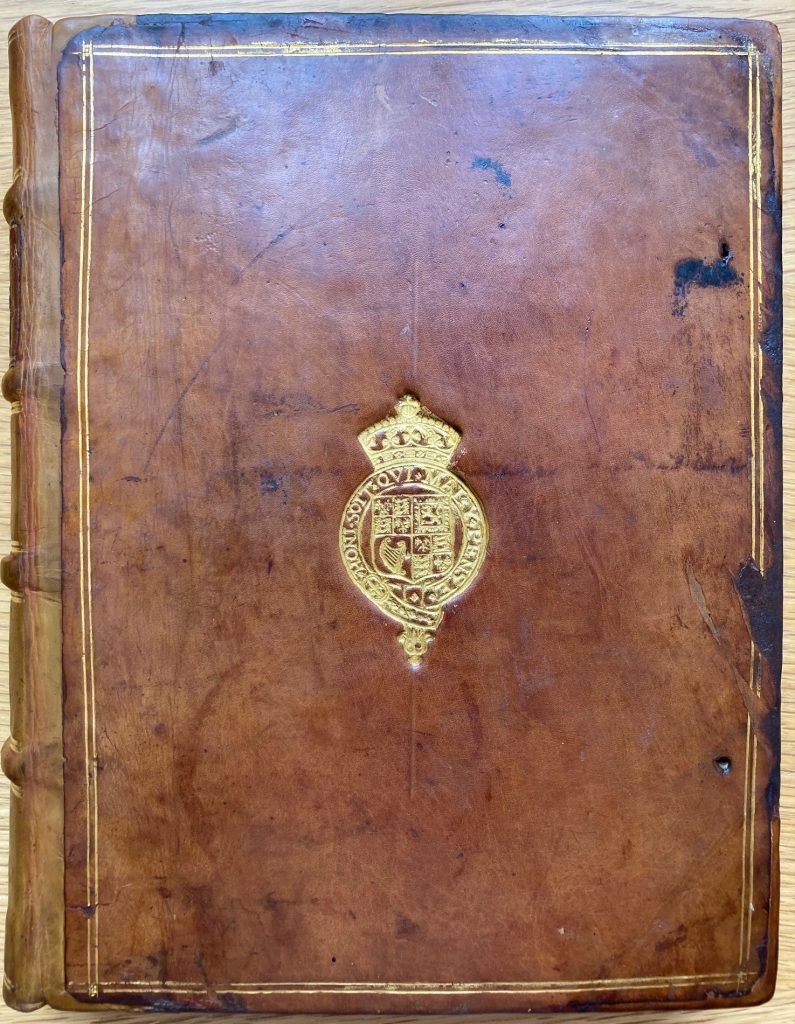
Seventeenth-Century Catholic Philosophers in Cambridge University Library: guest post by Niall Dilucia
In this guest post, Cambridge PhD student Niall Dilucia writes about his research into early modern intellectual history, examining the relationship between philosophy, theology, and salvation in the works of three English Catholic scholars: Kenelm Digby (1603-1665), Thomas White (1593-1676) and Franciscus à Sancta Clara (1598-1680). In 2021 Niall was co-convenor of the the Graduate Workshop in Political Thought and Intellectual History, and teaches undergraduate classes on Intellectual History and Postmodernism.
In the wake of the Reformation and the brief period of respite supplied by Mary I’s reign, the place of Catholics in early modern English society was precarious and far from enviable. Though periods of explicit persecution waxed and waned in the seventeenth and eighteenth centuries—reaching their bloody apogee in Titus Oates’ “Popish Plot” (1681–1685)—it was never an easy life for those who were committed to openly professing their Catholic faith. It would be incorrect, however, to conclude that the societal difficulties recusants (i.e. those who refused to attend Protestant services) faced in their day-to-day lives prevented them from intellectually flourishing. In my PhD research, I have studied the philosophy and theology of three of the most remarkable English Catholic scholars active in the seventeenth century: Sir Kenelm Digby (1603–1665), Thomas White (1593–1676), and Franciscus à Sancta Clara (1598–1680, whose birth name was Christopher Davenport). By considering how these three scholars (and friends) dealt with the most pressing theological concern of the day—how one achieves salvation—I have had the wonderful opportunity to reconstruct in detail the English Catholic intellectual culture in which they worked. Cambridge University Library’s extensive collection of work by Digby, White, and Sancta Clara has been incredibly useful in this endeavour, since it provides a unique snapshot of these scholars’ social ties, ambitions, and legacies.
Sir Kenelm Digby was renowned in his day, not just for his considerable philosophical achievements, but also for colourful extra-scholarly activities such as piratical expeditions against the Venetians in service of King Charles I. His philosophical magnum opus was the Two Treatises (Paris, 1644), a vernacular work which combined the “new” philosophical conclusions of figures like René Descartes with the concepts and terminology of the Aristotelian philosophical orthodoxy, ultimately producing an extended argument for the immortality of the soul. The UL has all five English editions of this popular book, and examination of them confirms the longevity of English interest in Digby’s philosophy well into the eighteenth century. A copy of the 1658 third edition (Hunter.d.65.15) at one point belonged to the eighteenth-century Lancashire medic Dr John Hargreaves, whose most lasting medical contribution—on the unpleasant subject of “a young girl who voided congealed matter”—was sent to the physician Hans Sloane and read before the Royal Society in 1713.[1] The annotations within the copy, a mixture of intellectual reflection on the soul and playful Hargreaves family scribblings, nicely illustrate the eventual status of the Two Treatises as both a specialised natural philosophical treatise recommended for study at the universities and a popular feature of eighteenth-century gentlemanly libraries.[2] On p. 71 we see a note in the margin which begins ‘when we speak of infinity as belonging to [a?] soul it belong[s] to simultaneous order…’. Indeed, a volume containing the 1665 edition of the first treatise “of bodies” and the 1645 edition of the second treatise “of Mans soule” (Hunter.d.66.5) was owned by the seventeenth-century London merchant Moses Bathurst, and the MP and bibliophile Sir Thomas Sebright (1692–1736) owned a 1644 first edition (Hunter.a.64.1). The early late seventeenth- and early eighteenth-century cleric William Torkington—whose books make up a substantial part of the UL’s Broughton parish library collection—owned a copy of the 1669 fifth edition (Broughton.88) which brings together Digby’s “greatest hits”: the Two Treatises and his two later discourses, delivered before learned audiences in Montpellier and the Royal Society respectively, on “the powder of sympathy” and “the vegetation of plants”.


Excitingly, the UL also owns three books from Digby’s substantial personal library, which was dispersed across Europe and North America after his death in 1665. Digby’s original library in England was largely destroyed by parliamentarians, leading to its resurrection in Paris (a city to which he escaped in 1643 after a period of imprisonment for royalist campaigning).[3] This library was auctioned off by the French state after Digby’s death in 1665, and it was largely bought by Digby’s relation George Digby, second Earl of Bristol (1612–77). The bindings and inscriptions with which Digby marked his books are various. For example, the UL has a handsomely bound 1547 edition of Cicero’s Epistulae ad Atticum (Rel.d.54.2), printed in Venice by Aldus Manutius’ son Paulus; this came to the UL with Bishop John Moore’s library, a gift from King George I in 1715. The volume is inscribed simply with Digby’s name on the title page; it contains two manicules on sigs. *iir and *iiv, but neither is recognisably in Digby’s hand. A similar inscription of Digby’s name is present in a copy of the French cleric Charles Hersent’s D. Dionysii the Areopagitae (Paris, 1626), but this time accompanied by his sometime motto: vacate et videte (taken from Psalms 45:11: “be at leisure at see that I am God”). By far the most interesting work owned by Digby in the UL’s collection is a volume (Rel.e.65.3) catalogued as being A Contemplation of Heaven (Paris, 1654), a devotional work written by Digby’s friend and ally, Thomas White. On closer inspection, however, it is in fact a volume in which Digby has had bound together White’s A Contemplation with White’s theological work, The State of the Future Life, (London, 1654); Digby’s own English translation of Albertus Magnus’s De adherendo Deo (London, 1654); and Digby’s attempts to persuade Lady Purbeck (daughter of Sir Edward Coke) to convert to Catholicism, later printed as A Conference with a Lady about Choice of Religion (Paris, 1638). On the spine, Digby’s gilt monograph is accompanied by the title ‘varia’, and the front and rear boards are embossed with fleurs-de-lys (Digby’s way of marking books from his Parisian library). Scholars have recognised the strength of Digby and White’s relationship, but this volume provides a new perspective both on the strength of their scholarly ties and the steps Digby took to memorialise them.
The final items of note are two editions of Deus, Natura, Gratia, a work by the English Franciscan philosopher Franciscus à Sancta Clara. Both of them came to the UL with Bishop John Moore’s library, a gift from King George I in 1715. Deus Natura, Gratia is an irenic and highly optimistic work which Sancta Clara penned to convince Catholics (and sympathetic Anglicans at Charles I’s court) of the concordance between the doctrines of the Catholic Church and Church of England. A UL copy of the first edition (F.2.2) bears the armorial binding of the Stuarts, which is interesting though not entirely surprising since Sancta Clara was a fixture of life at the Caroline Court, being a chaplain to Henrietta Maria. In his narration of Archbishop Laud’s downfall, Canterburies doome (London, 1646) William Prynne disapprovingly noted Sancta Clara’s closeness to King Charles and the Archbishop (p. 426); Prynne wrote that he gifted copies of Deus, Natura, Gratia to both of them. It is possible that F.2.2 is the copy gifted to the King, but it does not contain any inscription and is not bound in vellum, which are both features of Laud’s copy as Prynne describes it. In any case, the presence of the Stuart arms on the UL’s copy constitutes fascinating evidence of Catholic attempts to ingratiate themselves amongst royalty in the pre-war Caroline court. Interestingly F.2.2, like the later 1635 edition in the UL’s possession (F.4.50), contains pencil underlining and autograph corrections and additions to the Latin in ink; I am still in the process of attributing a concrete identity to this hand.
[1] See the entry in the catalogue of the Royal Society’s Archives here
[2] See e.g. the sometime Provost of Queen’s College, Oxford Thomas Barlow’s (c. 1607–1691) inclusion of Digby’s work in his recommendations to young scholars: (A. Dejordy and H.F. Fletcher, eds.) “A Library for Younger Schollers”: compiled by an English scholar-priest about 1655, edited with bibliographic index by Alma DeJordy and Harris Francis Fletcher (Urbana, IL: University of Illinois Press, 1961), p. 4.
[3] Helpful on Digby’s Library is Leopold Delisle (1893) ‘Sir Kenelm Digby and the Ancient Relationship between the French Libraries and Great Britain’ The Library (1): 1–15.



